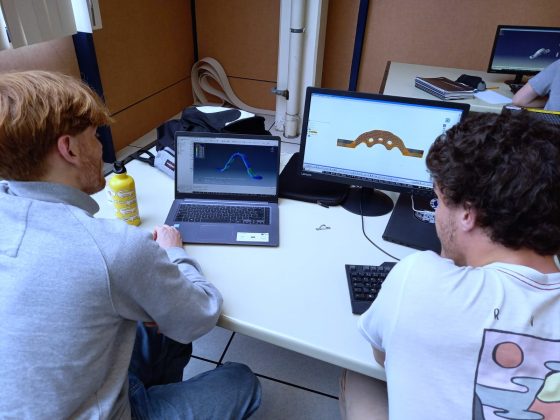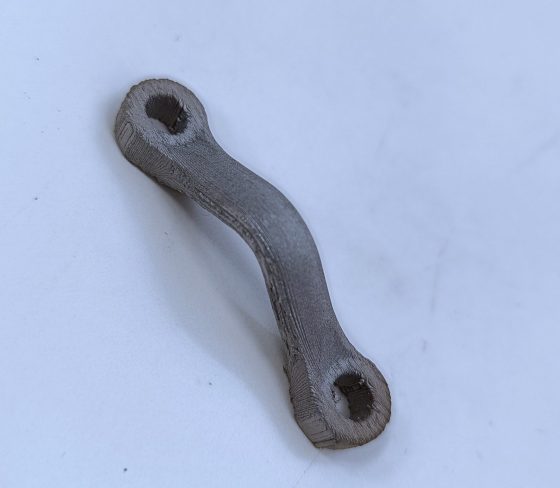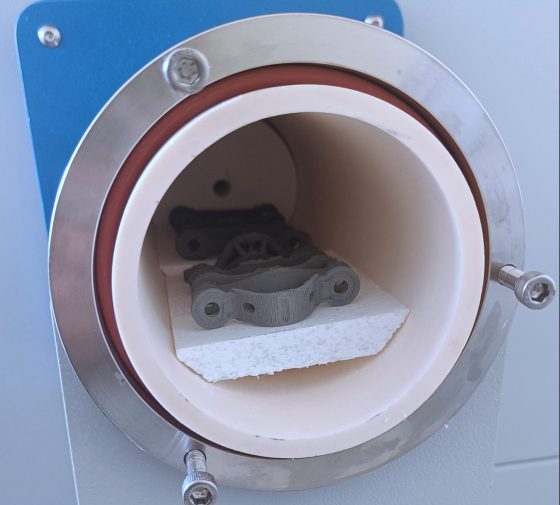Bruno levieil, a researcher & lecturer at ENSTA Bretagne, has decided to integrate Zetamix 3D printing technology into his student’s practical training curriculum at ENSTA Bretagne, the leading institution in engineering education. His goal being to provide students with hands-on experience in additive manufacturing, using a diverse range of industrial applications as learning platforms.

The opportunity
Recognizing the growing importance of additive manufacturing in modern engineering, ENSTA Bretagne sought to equip its students with practical skills in this emerging field. Traditional metal printing methods often require expensive equipment and specialized expertise, limiting accessibility for educational institutions. However, Zetamix 316L Stainless Steel filament offers a cost-effective and user-friendly alternative, enabling students to explore the realm of metal 3D printing with ease.
The idea came after facing urgency in stock shortages and supply difficulties for flat stainless steel boat cleats, a solution had to be found to both produce the missing parts and test design optimization. Last year, the university has tried producing these parts using PLA, but since it did not have the sufficient mechanical resistance, the parts didn’t fully serve the purpose.
Picture: ENSTA Brest Students during the practical training.

The Practical Training
Under Bruno’s guidance, students embark on a comprehensive exploration of Zetamix 316L filament, starting with material characterization and extending to design, fabrication, and testing.
First, students printed and test tensile bars in 316L, then, using industry-standard CAD software, they develop optimised designs to answer to the “boat cleat challenge”, with the objective of making a part as strong as the original, but with lower mass. By leveraging advanced simulation tools, such as TOSCA and ABAQUS, students refine their designs for optimal performance, gaining valuable insights into the iterative design process.
Picture: The 3D printed 316L stainless steel boat cleat.

Final test and lifecycle Assessment
After succeeding in design, students will print their design and test it, and conduct a comprehensive lifecycle analysis, comparing the environmental impact, durability, and cost-effectiveness of the 316L stainless steel 3D-printed cleats with standard machined parts using GRANTA Edupack. This evaluation aims to inform decision-making and underscores the sustainability of additive manufacturing in addressing complex manufacturing challenges. The culmination of this project involves a compelling presentation of the designed solution, supplemented by rigorous crash-testing to validate its performance under real-world conditions while the team documents and analyzes the results.
Picture: 3D printed 316L stainless steel boats cleats undergoing sintering.
ENSTA Bretagne’s adoption of Zetamix 316L Stainless Steel filament represents a paradigm shift in engineering education, empowering students to push the boundaries of innovation and creativity. As other universities consider similar initiatives, 3D printing stands to revolutionize the way the next generation of engineers are educated, laying the foundation for a brighter and more sustainable future.